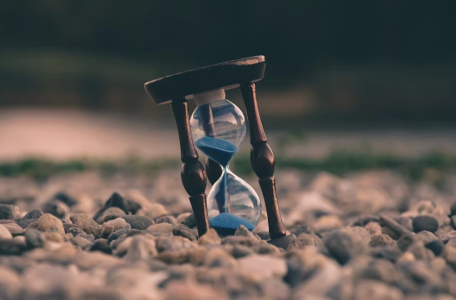How the fall time change can affect your sleep, mood, and energy levels
- Replies 0
It may feel like a gift—that bonus hour of sleep when clocks “fall back.” But your body might not agree right away.
The shift in daylight, even by just one hour, can throw off your internal rhythm and make mornings feel foggy and nights longer.
Understanding what really happens when time changes can help you ease the transition and protect your sleep, mood, and overall health.
When daylight saving time ends at 2 a.m. local time on Sunday, most Americans will set their clocks back one hour, returning to standard time until March.
For many, the switch feels simple enough—until Monday morning rolls around. That’s because our internal clock, known as the circadian rhythm, relies on sunlight to tell the brain when to wake and when to rest.
Losing evening light can leave some people sluggish, while the earlier sunrise helps others feel more refreshed.
“The best way to think about it is as if the central clock were like a conductor of an orchestra and each of the organs were a different instrument,” said Jamie Zeitzer, who co-directs Stanford’s Center for Sleep and Circadian Sciences.

When the timing of light and darkness suddenly changes, that orchestra slips out of sync. The body’s systems—from metabolism to mood regulation—can all feel slightly off-key for a few days.
And while most people adjust quickly, those already struggling with sleep or shift work may find the transition harder.
When you wake up and get outside soon after sunrise, your body gets the message that it’s time to be alert. But with daylight fading earlier, it’s easy to stay indoors and miss that natural cue.
That can delay the release of melatonin—the hormone that signals bedtime—and throw your sleep schedule out of rhythm. Even a single hour’s change can ripple through your body.
Also read: Get the best sleep of your life tonight with these expert bedtime routine secrets
Studies have linked time shifts to increases in car accidents and heart problems, especially after the springtime loss of sleep. During the fall, the sudden change in daylight can also worsen seasonal affective disorder, a form of depression triggered by less sunlight.
Still, many experts say the real problem isn’t falling back or springing forward—it’s doing both. New research from Stanford University found that switching back and forth twice a year may be the least healthy option.
The study showed that sticking to one schedule year-round would help stabilize sleep patterns and reduce health disruptions.
Permanent standard time, which aligns more closely with the sun, appears to be slightly better for the body’s natural rhythm. It helps keep your mornings bright, your nights dark, and your body clock steady.
Also read: Understanding 3 AM wake-ups: What your body may be telling you
So how can you make the change easier? Start by adjusting your bedtime gradually—about 15 minutes earlier each night leading up to the time change. Spend time outside in the morning light, even if it’s just a short walk or sitting by a sunny window.
Avoid too much screen time before bed, and keep your evenings calm and dim to help your body wind down. These small habits can make a big difference in how smoothly you adjust.
As for whether the US will ever end the biannual time change, the debate continues. The Sunshine Protection Act, which proposed keeping daylight saving time permanent, has stalled in Congress for now.
Meanwhile, Arizona and Hawaii remain on standard time all year—and some experts believe that’s the healthiest approach. Until a decision is made, our bodies will keep doing this delicate dance with the clock each spring and fall.
Read next:

How do you feel when the clocks change each fall? Do you embrace the extra sleep or struggle with darker evenings? Share your experience below—do you think we should keep standard time all year long?
The shift in daylight, even by just one hour, can throw off your internal rhythm and make mornings feel foggy and nights longer.
Understanding what really happens when time changes can help you ease the transition and protect your sleep, mood, and overall health.
When daylight saving time ends at 2 a.m. local time on Sunday, most Americans will set their clocks back one hour, returning to standard time until March.
For many, the switch feels simple enough—until Monday morning rolls around. That’s because our internal clock, known as the circadian rhythm, relies on sunlight to tell the brain when to wake and when to rest.
Losing evening light can leave some people sluggish, while the earlier sunrise helps others feel more refreshed.
“The best way to think about it is as if the central clock were like a conductor of an orchestra and each of the organs were a different instrument,” said Jamie Zeitzer, who co-directs Stanford’s Center for Sleep and Circadian Sciences.

10 budget-friendly foods that can naturally help lower your blood pressure. Image source: Aron Visuals / Unsplash
When the timing of light and darkness suddenly changes, that orchestra slips out of sync. The body’s systems—from metabolism to mood regulation—can all feel slightly off-key for a few days.
And while most people adjust quickly, those already struggling with sleep or shift work may find the transition harder.
When you wake up and get outside soon after sunrise, your body gets the message that it’s time to be alert. But with daylight fading earlier, it’s easy to stay indoors and miss that natural cue.
That can delay the release of melatonin—the hormone that signals bedtime—and throw your sleep schedule out of rhythm. Even a single hour’s change can ripple through your body.
Also read: Get the best sleep of your life tonight with these expert bedtime routine secrets
Studies have linked time shifts to increases in car accidents and heart problems, especially after the springtime loss of sleep. During the fall, the sudden change in daylight can also worsen seasonal affective disorder, a form of depression triggered by less sunlight.
Still, many experts say the real problem isn’t falling back or springing forward—it’s doing both. New research from Stanford University found that switching back and forth twice a year may be the least healthy option.
The study showed that sticking to one schedule year-round would help stabilize sleep patterns and reduce health disruptions.
Permanent standard time, which aligns more closely with the sun, appears to be slightly better for the body’s natural rhythm. It helps keep your mornings bright, your nights dark, and your body clock steady.
Also read: Understanding 3 AM wake-ups: What your body may be telling you
So how can you make the change easier? Start by adjusting your bedtime gradually—about 15 minutes earlier each night leading up to the time change. Spend time outside in the morning light, even if it’s just a short walk or sitting by a sunny window.
Avoid too much screen time before bed, and keep your evenings calm and dim to help your body wind down. These small habits can make a big difference in how smoothly you adjust.
As for whether the US will ever end the biannual time change, the debate continues. The Sunshine Protection Act, which proposed keeping daylight saving time permanent, has stalled in Congress for now.
Meanwhile, Arizona and Hawaii remain on standard time all year—and some experts believe that’s the healthiest approach. Until a decision is made, our bodies will keep doing this delicate dance with the clock each spring and fall.
Read next:
- Sleep like a baby: 3 genius tips to adapt to daylight saving time effortlessly
- Struggling to sleep? Discover 5 genius tricks to beat insomnia tonight
Key Takeaways
- When the clocks fall back, your body experiences a short but noticeable disruption in its sleep-wake rhythm.
- Morning light helps reset the circadian clock, while too much evening brightness can delay restfulness.
- Experts recommend permanent standard time as the healthiest option, aligning better with natural daylight patterns.
- For now, simple routines like sunlight exposure and gradual bedtime shifts remain the best way to ease the transition.






